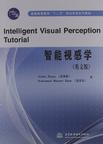Intelligent Visual Perception Tutorial智能视感学
出版时间:2012-8 出版社:水利水电出版社 作者:张秀彬,曼苏乐 著 页数:304 字数:698000
内容概要
张秀彬、曼苏乐编著的《智能视感学(英文版)》从计算机视感及其信号处理的基本概念与基础理论出发,阐述了基于图像信息的识别、理解与检测技术原理与方法。
本书根据作者多年来从事智能视感理论与技术研究的成果,结合研究性本科与研究生教学特点编撰而成。全书分为基础篇与应用篇两大部分,其中,基础篇系统地介绍了智能视感的基本原理、方法、关键技术及其算法;应用篇则由配合主要基础理论和方法的应用技术实例所组成。全书遵循理论知识与实用技术的紧密结合、数学方法与实用效果的相互映证等编写原则。本书涉及的教学内容主要包括:图像处理基础、摄像机数学模型、视感识别与检测原理、智能视感实用技术等。
《智能视感学(英文版)》可以作为检测与控制、自动化、计算机、机器人及人工智能等专业的高年级本科生和研究生的教材,也可作为专业技术人员的参考工具书。
书籍目录
Foreword
Preface
Base article
Chapter 1 Introduction
1.1 Overview
1.1.1 Concept about the Visual
Perception
1.1.2 The Development of Visual Perception
Technology
1.1.3 Classification of Visual Perception
System
1.2 A Visual Perception Hardware-base
1.2.1 iImage Seing
1.2.2 Image Acquisition
1.2.3 PC Hardware Requirements for
VPS
Exercises
Chapter 2 Foundatio of Image Processing
2.1 Basic Processing Methods for Gray Image
2.1.1 Spatial Domain Enhancement
Algorithm
2.1.2 Frequency Domain Enhancement
Algorithm
2.2 Edge Detection of Gray Image
2.2.1 Threshold Edge Detection
2.2.2 Gradient-based Edge Detection
2.Z.3 Laplacian Operator
2.2.4 Canny Edge Operator
2.2.5 Mathematical Morphological
Method
2.2.6 Brief Description of Other
Algorithms
2.3 Binarization Processing and Segmentation of
Image
2.3.1 General Description
2.3.2 Histogram-based Valley-point
Threshold Image Binarization
2.3.3 OTSU Algorithm
2.3.4 Minimum Error Method of Image
Segmentation
2.4 Color Image Enhancement
2.4.1 Color Space and Its
Traformation
2.4.2 Histogram Equalization of Color
Levels in Color Image
2.5 Color Image Edge Detection
2.5.1 Color Image Edge Detection
Based on Gradient Extreme Value
2.5.2 Practical Method for Color Image
Edge Detection
Exercises
Chapter 3 Mathematical Model of the Camera
3.1 Geometric Traformatio of Image Space
3.1.1 Homogeneous Coordinates
3.1.2 Orthogonal Traformation and Rigid
Body Traformation
3.1.3 Similarity Traformation and Affine
Traformation
3.1.4 Pepective Traformation
3.2 Image Coordinate System and Its Traformation
3.2.1 Image Coordinate System
3.2.2 Image Coordinate Traformation
3.3 Common Method of Calibration Camera Paramete
3.3.1 Step Calibration Method
3.3.2 Calibration Algorithm Based on More
than One Free Plane
3.3.3 Non-linear Distortion Parameter
Calibration Method
Exercises
Chapter 4 Visual Perception Identification Algorithms
4.1 Image Feature Extraction and Identification
Algorithm
4.1.1 Decision Theory Approach
4.1.2 Statistical Classification
Method
4.1.3 Feature Classification Discretion
Similarity about the Image Recognition Process
4.2 Principal Component Analysis
4.2.1 Principal Component Analysis
Principle
4.2.2 Kernel Principal Component
Analysis
4.2.3 PCA-based Image Recognition
4.3 Support Vector Machines
4.3.1 Main Contents of Statistical
Learning Theory
4.3.2 Classification-Support Vector
Machine ~
4.3.3 Solution to the Nonlinear Regression
Problem
4.3.4 Algorithm of Support Vector
Machine
4.3.5 Image Characteristics Identification
Based on SVM
4.4 Moment Invariants and Normalized Moments of
Inertia
4.4.1 Moment Theory
4.4.2 Normalized Moment of Inertia
4.5 Template Matching and Similarity
4.5.1 Spatial Domain Description of
Template Matching
4.5.2 Frequency Domain Description of
Template Matching
4.6 Object Recognition Based on Color Feature
4.6.1 Image Colorimetric Processing
4.6.2 Cotruction of Color-Pool
4.6.3 Object Recognition Based on
Color
4.7 Image Fuzzy Recognition Method
4.7.1 Fuzzy Content Feature and Fuzzy
Similarity Degree
4.7.2 Extraction of Fuzzy Structure
4.7.3 Fuzzy Synthesis Decision-making of
Image Matching
Exercises
Chapter 5 Detection Principle of Visual Perception
5.1 Single View Geometry and Detection Principle of
Monocular Visual Perception
5.1.1 Single Vision Coordinate
System
5.1.2 Basic Algorithm for Single Vision
Detection
5.1.3 Engineering Technology Based on
Single View Geometry
5.2 Detection Principle of Binocular Visual
Perception
5.2.1 Two-view Geometry and Detection of
Binocular Perception
5.2.2 Epipolar Geometry Principle
5.2.3 Determination Method of Spatial
Coordinates
5.2.4 Camera Calibration in Binocular
Visual Perception System
5.3 Theoretical Basis for Multiple Visual Perception
Detection
5.3.1 Teor Geometry Principle
5.3.2 Geometric Properties of Three Visual
Teor
5.3.3 Operation of Three-visual Teor
5.3.4 Cotraint Matching Feature Points of
Three-visual Teor
5.3.5 Three-visual Teor Restrict the Three
Visual Restraint Feature Line' s Matching
Exercises
Application article
Chapter 6 Practical Technology of Intelligent Visual
Perception
6.1 Automatic Monitoring System and Method of Load
Limitation of The Bridge
6.1.1 The Basic Composition of The
System
6.1.2 System Algorithm
6.2 Intelligent Identification System for Billet
Number
6.2.1 System Control Program
6.2.2 Recognition Algorithm
6.3 Verification of Banknotes-Sorting Based on Image
Information
6.3.1 Preprocessing of the Banknotes
Image
6.3.2 Distinction Between Old and New
Banknotes
6.3.3 Distinction of the Denomination and
Direction of the Banknotes
6.3.4 Banknotes Fineness Detection
6.4 Intelligent Collision Avoidance Technology of
Vehicle
6.4.1 Basic Hardware Configuration
6.4.2 Road Obstacle Recognition
Algorithm
6.4.3 Smart Algorithm of Anti-collision to
Pedestria
6.5 Intelligent Visual Perception Control of Traffic
Lights
6.5.1 Overview
6.5.2 The Core Algorithm of Intelligent
Visual Perception Control of Traffic Lights
Exercises
Appendix
Least Square and Common Algorithms in Visual Perception
Detection
I.1 Basic Idea of the Algorithm
I.2 Common Least Square Algorithms in Visual
Perception Detection
I.2.1 Least Square of Linear System
of Equatio
I.2.2 Least Square Solution of Nonlinear
Homogeneous System of Equatio Theory and Method of BAYES
Decision
II.1 Introduction
II.2 BAYES Classification Decision Mode
II.2.1 BAYES Classification of
Minimum Error Rate
II.2.2 BAYES Classification Decision
of Minimum Risk
III Statistical Learning and VC-dimeion Theorem
III.1 Bounding Theory and VC-dimeion Principle
III.2 Generalized Capability Bounding
III.3 Structural Risk Minimization Principle of
Induction
IV Optimality Conditio on Cotrained Nonlinear Programming
Problem
IV.1 Kuhn-Tucker Condition
IV.1.1 Gordon Lemma
IV.1.2 Fritz John Theorem
IV.1.3 Proof of the Kuhn-Tucker
Condition
IV.2 Karush-Kuhn-Tucker Condition
Subject Index
References
图书封面
评论、评分、阅读与下载
Intelligent Visual Perception Tutorial智能视感学 PDF格式下载
用户评论 (总计1条)
- 这本书比较基础,但写得不错!
